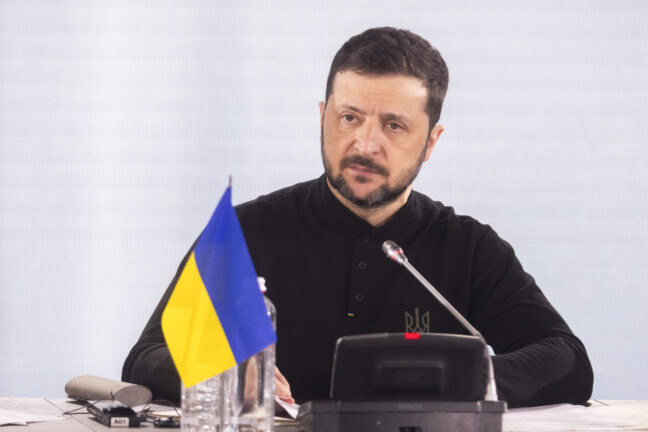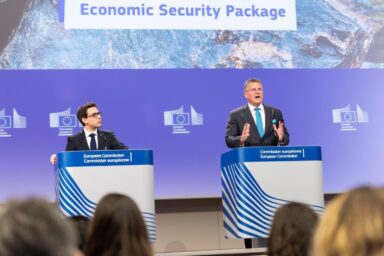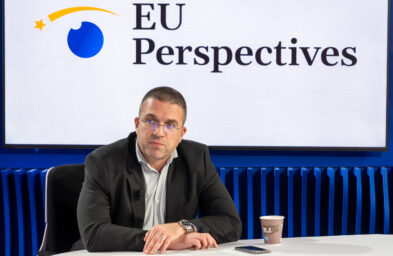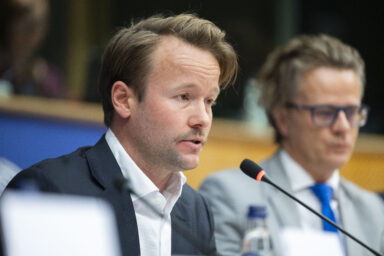Short of an utter disaster, Monday’s Washington meeting between presidents Donald Trump of the US and Volodymyr Zelenskyy of Ukraine—with the latter enjoying strong European backing—has been hailed as a success. Yet it provides scant clarity regarding Mr Trump’s true intentions and, by extension, the fuure of the Russo-Ukrainian war.
Six months after a their dispiriting White House encounter, a second meeting between Ukrainian President Volodymyr Zelenskyy and US President Donald Trump concluded on August 18, 2025 with cautiously optimistic pronouncements. The talks, also involving EU leaders, appear to have yielded sufficient progress for Mr Trump to promptly phone Russia’s leader, Vladimir Putin, to discuss direct talks between Russia and Ukraine. The swift shift in tone raises hopes for a resolution to the protracted conflict. Yet, questions linger about the terms of any settlement and the implications for European security.
The sudden diplomatic flurry places the EU at a crucial juncture. German Chancellor Friedrich Merz, speaking in Washington, proposed that a Putin-Zelenskyy meeting should take place within two weeks, followed by a trilateral summit including Mr Trump. But the US leader downplayed the outcome, saying: “In one or two weeks, we will know whether we can solve this or whether the terrible killing will continue.”
Europe’s diplomatic stampede
The lead-up to the Washington meeting saw an extraordinary delegation of European leaders rushing to the US capital. They included Keir Starmer of Britain, Giorgia Meloni of Italy, Alexander Stubb of Finland, Emmanuel Macron of France, and Ursula von der Leyen of the European Commission. Mr Macron stressed that they aimed “to defend the interests of the Europeans.” Their presence underscores the EU’s determination to shape the course of negotiations and ensure that any settlement aligns with European security interests.
This is a huge step forward. The political will is there. — Volodymyr Zelenskyy, President of Ukraine
A key area of discussion revolved around security guarantees for Ukraine. “It is important for the United States to send signals that it will help,” Mr Zelenskyy told reporters. “This is a huge step forward. The political will is there.” US officials suggested these guarantees could be provided by European countries and the United States. However, Russia has flatly rejected the deployment of any NATO troops in Ukraine.
Mark Rutte, the NATO secretary general, who attended the talks, told Fox News that the group would work on the details of security guarantees for Ukraine “over the coming days” and would “reconvene virtually.” Putting troops on the ground would be part of NATO member talks, Mr Rutte said.
You might be interested
Mr Trump’s post-meeting comments suggested that the US would offer “co-ordination” for Europe’s security guarantees, while stopping short of a commitment of American military support for Kyiv. “During the meeting we discussed Security Guarantees for Ukraine, which Guarantees would be provided by the various European Countries, with a co-ordination with the United States of America,” Mr Trump wrote on Truth Social. This raises questions about the level of US commitment and the extent to which Europe will bear the primary responsibility for Ukraine’s future security.
Diverging priorities
While Mr Trump promotes a swift solution, his approach does not align with Ukraine’s interests. Analyst Sudha David-Wilp of the German Marshall Fund warned that “Trump’s goal of a quick solution could undermine Ukraine’s position at the negotiating table.” The question of a ceasefire also highlights potential differences. Mr Merz put the matter back on the negotiating table after Mr Trump, influenced by talks with Mr Putin in Alaska, had brushed it aside.
Mr Macron expressed skepticism that Mr Putin was willing to negotiate. “I am not sure that President Putin also wants peace,” he said. “His ultimate goal is to gain as much territory as he can, to weaken Ukraine.”
Mr Putin wants Kyiv to relinquish the regions of Luhansk and Donetsk, including areas Russian troops have not managed to capture. Accepting such terms would permanently weaken Ukraine’s military position. Mr Zelenskyy thus faces a difficult choice. He may surrender territory in exchange for vague promises for Ukraine’s future security, or hold his ground and risk reigniting Mr Trump’s anger.
Transatlantic dynamics
Moscow seems to believe it holds the upper hand. Russia is believed to have managed to convince the US president that the solution to ending the war lies in Kyiv. Also, it seeks to decouple its relationship with the United States from the war, and to weaken transatlantic relations. Weakening the EU has been one of Putin’s declared goals since 2014.
Economically and militarily, Russia—despite its problems—is strong enough to carry on. The time pressure weighs more heavily on Ukraine than on Russia. He acts in a world where might makes right and and views President Putin as a fellow leader that has considerable hard power at his disposal. The US president also sees opportunities for deals with President Putin who doesn’t talk about values when it comes to policymaking as has been a common refrain among Western leaders.
(Putin’s) ultimate goal is to gain as much territory as he can, to weaken Ukraine. — Emmanuel Macron, President of France
The outcome of the Washington meeting will shape Europe’s political agenda. The European leaders were expected to stay for dinner, but abruptly dispersed shortly before 7 pm Eastern time. European Council President António Costa has invited EU heads of state and government to a virtual meeting on Tuesday at 1pm.
Most European commentators concurred that Europe must remain united to convince President Trump that US deterrence on the continent is vital to America’s prosperity, given that Europe and the United States are major trading partners. How far will the optimism go is another matter.











